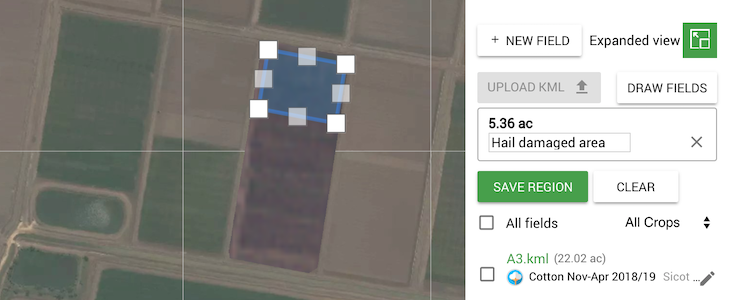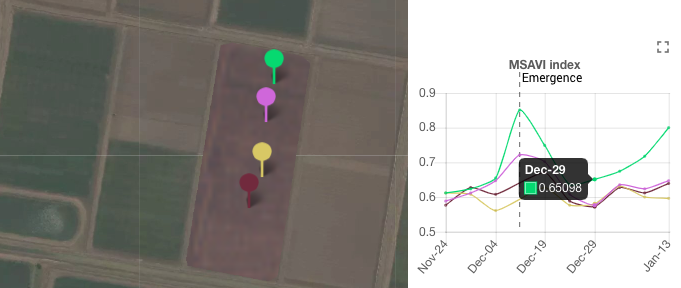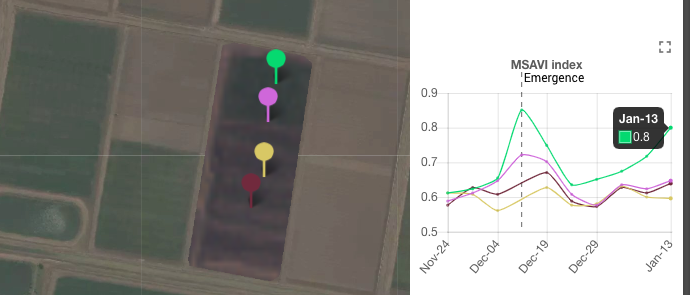Hail damage in the summer crop is no surprise to farmers and agronomists. However, if it has occurred to your summer crop you want to be on top of it and know exactly how much crop you have lost and how much of it will be able to recover.
Assessment of the hail damage area can be done from both spatial and spectral perspective to find out both
- the extent of the damage and
- evaluate the ability of the crop to recover.
Using the "Draw a polygon" tool in FluroSense, the user in a few simple clicks get an idea of the damaged area of 5.36 ac making up 24% of the field area 22.02 ac. In the case of these files, the other parts of the field were equally damaged but the crop was in a later growth stage in the Northern part of the field, so it suffered the hail damage more severely, as will be seen in the spectral part of the assessment.

As growers would expect, some crop, depending on its growth stage at the time of hail event and severity of the damage, might be still able to recover.
Below it is demonstrated how an agronomist utilised the "Analytics" tool and specifically, the Modified Soil Adjusted Vegetation Index (MSAVI) to assess the resilience of their crops. As presented in an earlier remote sensing tutorial MSAVI is an optimal index to track crop performance in early growth stages when soil influence (signal noise in satellite imagery) is high.
https://youtu.be/-_3vg5VlxMI
Above you can see a short clip demonstrating how MSAVI index tracks crop recovery after the hail event (around Dec, 20) using a few pins dropped in the field using the Analytics tool.
The Northern part of the field (green pin) has seen more growth prior to hail event and has accumulated more plant matter, which we can see rapidly dropping on the graph straight after the hail event.
Although the other parts of the fields were damaged as well, the crop growth in them (prior to hail event), as well as the recovery of the crop after the event is poor compared to the Northern section of the field.
If such an event has damaged your crop, you can follow this workflow on your farm to get a quantitative assessment of the resilience of your crop in relation to its growth stages across the field. This difference in crop resilience is quantified in the units of MSAVI index at this stage (in season) and can be related to the difference in the crop yield at the end of the season to evaluate the overall financial losses.







